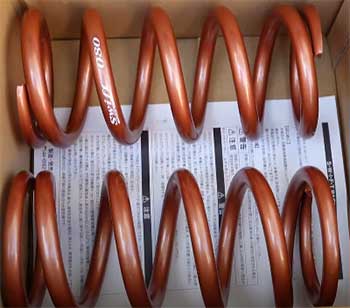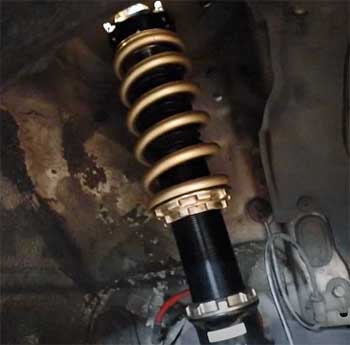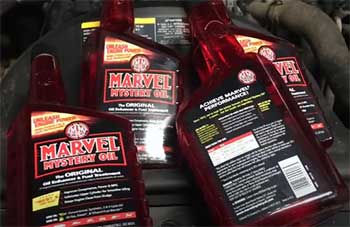There’s a turf war going on beneath your wheels. It’s a silent but incredibly significant conflict. It’s Swift Springs and BC Springs. These automotive underdogs are jostling for the top spot, and today, we’re here to discover who takes the crown.
A Brief Comparison Table
| Feature | Swift Springs | BC Springs |
| Material | Proprietary ‘HS5.TW’ alloy | Standard high-quality steel |
| Weight | Lighter due to the special alloy | Typically heavier |
| Spring Rate | Linear (constant rate) | Progressive (increasing rate) |
| Performance | Consistent and predictable | Versatile and adaptive |
| Price | Higher | More affordable |
| Best For | Those who prioritize consistency, predictability, and are willing to invest more | Those who prefer versatility, adaptability, and are budget-conscious |
In conclusion, the choice between Swift Springs and BC Springs comes down to the specific needs and preferences of the driver. Both have their unique strengths and offer quality performance, making them both formidable competitors in the spring market.
Whether it’s the consistent performance of Swift Springs or the versatile adaptability of BC Springs, it’s all about what works best for your ride.
The Swift Springs Saga

Swift Springs began their journey in Tokyo, Japan.
Born out of a rich tradition of engineering and design, Swift springs have found their place in the hearts of car enthusiasts across the globe.
And for good reason.
The most striking feature of Swift springs is their proprietary alloy material, ‘HS5.TW.’
This alloy, combined with a unique manufacturing process, allows Swift Springs to be lighter than their competitors while maintaining durability and strength.
Swift Springs are also known for their superior linearity. They ensure that the spring rate is consistent, meaning your car handling will be more predictable.
Pros:
- Lightweight: Thanks to their unique alloy, Swift Springs are less weighty, improving your vehicle’s handling.
- Consistent: The linear rate allows for predictability and reliability when driving.
- Durable: Despite their lightweight nature, Swift Springs are impressively robust.
Cons:
- Pricey: Superior performance often comes with a hefty price tag. Swift Springs are no exception.
- Less flexibility: The consistent, linear rate might be a downside for those looking for more versatility.
The BC Springs Story
BC Springs, a key offering from BC Racing, are a top choice for car tuning enthusiasts worldwide. BC Racing is a name synonymous with performance, customization, and reliability, and their springs are no exception.
BC Springs are known for their progressive spring rate, which means the stiffness increases as the spring is compressed. This feature makes them adaptable to different driving conditions.
Pros:
- Versatile: The progressive spring rate adjusts to varying road conditions, giving drivers a more adaptable driving experience.
- Affordable: BC Springs are priced competitively, offering good value for money.
- Customizable: BC Racing offers different spring rates for various applications, allowing drivers to tailor their experience.
Cons:
- Heavier: BC Springs are typically heavier than Swift Springs.
- Less predictable: The progressive spring rate could make handling less predictable compared to linear springs.
Key Differences Between Swift And BC Springs
Despite both being high-performing components in the world of car modifications, Swift Springs and BC Springs have distinct differences. These differences are not only in their construction and manufacturing but also in the driving experience they offer.
- Material and Manufacturing

Swift Springs take a significant edge in this area with their proprietary alloy ‘HS5.TW.’
This material is a result of intensive research and development efforts, tailored to offer both strength and lightweight properties.
This is a crucial advantage, as lighter springs reduce the unsprung weight of the vehicle, enhancing its overall performance.
On the other hand, BC Springs, though made with high-quality steel, do not boast of a proprietary alloy.
Their manufacturing process is more traditional, leading to reliable, durable springs.
However, they tend to be heavier than Swift Springs.
- Spring Rate
The most pronounced difference between Swift Springs and BC Springs lies in their spring rate. Swift Springs are known for their linear spring rate. A linear spring offers a constant rate, meaning the force it exerts is directly proportional to the distance it’s compressed.
This characteristic ensures predictable handling, making Swift Springs a favorite among drivers who prioritize consistency and predictability in their rides.
BC Springs, contrastingly, feature a progressive spring rate. A progressive spring increases its rate as it’s compressed. In simpler terms, these springs get stiffer as they’re compressed further.
This property makes BC Springs adaptive to varying road conditions and driving styles, offering versatility. It could be an advantage or a disadvantage, depending on the driver’s preference.
- Price
Swift Springs and BC Springs also differ significantly in price. The former comes with a steeper price tag due to its proprietary material and the benefits it brings. For car enthusiasts seeking the best performance and don’t mind investing more, Swift Springs prove to be a worthy purchase.
In contrast, BC Springs offer a more budget-friendly alternative. They provide reliable performance, versatility, and customization at a more affordable price point, making them a great choice for those working within a budget.
Also Read: Comparison of N3 Shocks And V2 Monotube Shocks Absorbers.
Frequently Asked Questions ( FAQ)
Swift Springs are made from a proprietary alloy, resulting in a lighter spring that doesn’t sacrifice durability. Moreover, their consistent linear rate ensures predictable handling.
Swift Springs may be pricey, but they offer impressive performance benefits. If you’re an enthusiast looking for consistent handling and lightweight springs, they could be worth the investment.
Swift Springs are lighter and more robust than regular springs, thanks to their unique alloy. They also offer a consistent linear spring rate for predictable handling.
Swift Springs are linear, offering a constant rate that allows for predictable handling.
The Verdict
Choosing between Swift Springs and BC Springs ultimately boils down to what you prioritize as a driver. Swift Springs offer a lightweight, robust, and consistent performance, ideal for those who prefer predictability and don’t mind spending extra for these features.
On the other hand, BC Springs cater to those who appreciate flexibility and versatility on the road. Their progressive rate allows for adaptability to different driving conditions, and their competitive pricing is a plus.
Both Swift Springs and BC Springs hold their ground in their respective areas. The winner of the spring battle depends on your driving needs and budget. Consider what you value most in your vehicle’s performance, and let that guide your decision.

